CPO of FEMA Joins GTSC September 22
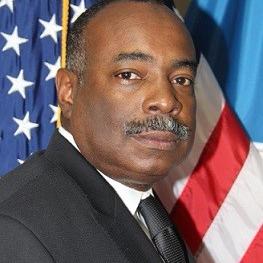
Bobby McCane

Your business continuity plan could be compromised if your employees and their families are unprepared to keep their families and pets safe after a disaster. According to a 2012 poll by Adelphi University Center for Health Innovation, almost half of all Americans have no family disaster plan or supplies, making it very likely that some of your employees are unprepared.
Preparedness Gaps
Improving the Speed of Recovery
In order to return to normal as soon as possible after a disaster, communities need businesses open and employees at work. That’s why it’s vital that you work with employees, especially any that are essential for business continuity and resilience, to develop a family preparedness plan.
Most of the 48% of Americans without emergency supplies think it’s a good idea to have supplies and a plan, but they keeping putting it off. By incorporating family preparedness into the culture of preparedness you promote for the business, you provide people with information and a framework to make emergency planning a priority at home and at the office.
5 Ways to Encourage Employees to Develop a Family Emergency Plan
Strengthen your business continuity planning by encouraging family preparedness for your employees. Everyone will be better off for it.
 Lilly Harris is the CEO of MSA, Inc., a small, economically disadvantaged, woman-owned small business that delivers expertise and knowledge in Professional Services, Systems Test Evaluation and Support, and Emergency Management to more than thirty federal and commercial clients.
Lilly Harris is the CEO of MSA, Inc., a small, economically disadvantaged, woman-owned small business that delivers expertise and knowledge in Professional Services, Systems Test Evaluation and Support, and Emergency Management to more than thirty federal and commercial clients.
The Federal Emergency Management Agency (FEMA) is facing a tremendous number of challenges including more violent and frequent weather incidents, preparedness awareness, long-term disaster recovery efforts and continuing financial constraints. To achieve the best outcomes, the Department of Homeland Security’s Quadrennial Homeland Security Review identifies strengthening public-private partnerships as critical to integrating the private sector’s innovation, resources, ingenuity and experience to the mission.
Join us to discuss the changing challenges to FEMA and other government facilities posed by changing climate conditions, the advances in alert systems and disaster communications, new technologies to support the mission and what concrete steps we can take to strengthen the exchange between the public and private sector.
 Antwane Johnson
Antwane Johnson
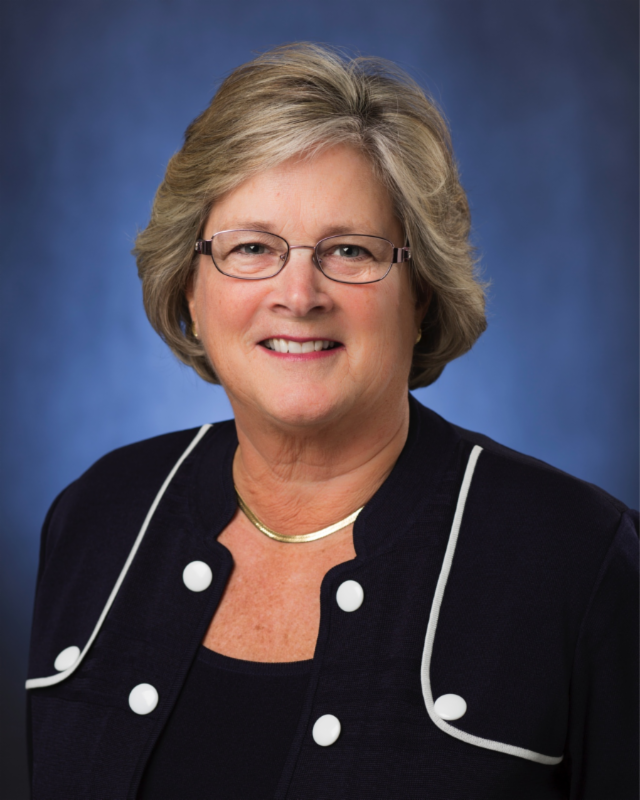 Anne Petera
Anne Petera

 Brian Lepore
Brian LeporeDirector of Defense Capabilities and Management, GAO
 Todd Jasper
Todd Jasper
 Kevin Delin
Kevin Delin
Founder, SensorWare Systems
 Ryan Denmark
Ryan Denmark
CEO, RSDCGroup
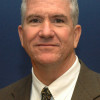 David McKernan
David McKernan
Coordinator of Emergency Management, Fairfax County Office of Emergency Management
Thank you to our National Preparedness Month Chair!
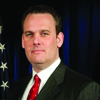 Jason McNamara
Jason McNamara
Vice President, Obsidian Analysis
Former Chief of Staff, FEMA
If you are interested in supporting the National Preparedness Month program, please contact us!
Join the Government Technology & Services Coalition (GTSC) and the InfraGard National Capital Region Members Alliance for National Preparedness Month: Focus on FEMA & HHS on Thursday, September 26. Register for this program here.
Agenda At A Glance 8:00 AM: Registration & Breakfast 8:30 AM: Conference Introduction 8:40 AM: Keynote: HHS Preparedness & Response Priorities 9:15 AM: FEMA’s Policy & Program Priorities 10:00 AM: GTSC Designation of Leadership Excellence & American Red Cross Ready Rating program 11:00 AM: Building Resilient Communities through Public Private Partnerships 12:00 PM: Luncheon Keynote 1:30 PM: Getting It Done: Prevention & Preparedness for All HazardsSpeakers:
 Sara Bryant
Sara BryantSara Bryant is Section Chief in the Federal Emergency Management Agency’s Grant Programs Directorate (FEMA GPD). In her current capacity, she is responsible for the development and interagency coordination of FEMA’s non-disaster preparedness grant portfolio,providing advice and guidance to senior FEMA management on pertinent homeland security programs and priorities, the effectiveness of those programs as implemented in the field, recommends needed changes and improvements, and provides input on complex issues impacting Department of Homeland Security grant programs. Since her time with GPD, Sara has also coordinated preparedness planning efforts with state and local homeland security officials throughout the country, and provided expert guidance on the Department’s homeland security and emergency preparedness programs. She has previously served as the GPD’s Preparedness Officer for states to include California, Ohio, Iowa, Illinois, New Mexico, and Michigan. Sara works in Washington, DC and has been with FEMA GPD since 2006.
 Brian Kamoie
Brian KamoieBrian Kamoie was appointed by President Obama as Assistant Administrator of the Federal Emergency Management Agency for Grant Programs in April 2013. In that capacity he oversees over $17 billion in grant programs to build, sustain, and improve our national capability to prepare for, protect against, respond to, recover from, and mitigate all hazards. Prior to his appointment, Mr. Kamoie served as Senior Director for Preparedness Policy on the White House National Security Staff (NSS) from 2009 to 2013. In that role he led a team of professionals in the development of national policy related to all-hazards preparedness, individual and community resilience, public health and medical preparedness, domestic critical infrastructure protection and resilience, national security/emergency preparedness communications, and preparedness grants.
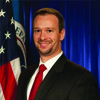 David Kaufman
David KaufmanDavid J. Kaufman is FEMA’s Associate Administrator for Policy, Program Analysis, and International Affairs. Appointed in September 2009, he is responsible for providing leadership, analysis, coordination, and decision-making support to the FEMA Administrator on a wide range of Agency policies, strategy, plans, programs, and key initiatives. Mr. Kaufman has extensive experience with homeland security and emergency management issues. He has been a member of the faculty at the Naval Postgraduate School’s Center for Homeland Defense and Security, where he has taught in the Center’s graduate and executive level education programs; was the Safety and Security Director for CNA, a non-profit think-tank; and has previously served in several senior positions in the U.S. Department of Homeland Security and in FEMA.
 Dr. Lisa Kaplowitz
Deputy Assistant Secretary for Policy
Office of the Assistant Secretary for Preparedness and Response, HHS
Dr. Lisa Kaplowitz
Deputy Assistant Secretary for Policy
Office of the Assistant Secretary for Preparedness and Response, HHS
Lisa Kaplowitz, MD, MSHA is the Deputy Assistant Secretary for Policy in the Office of the Assistant Secretary for Preparedness and Response (ASPR), U.S. Department of Health and Human Services, a position she has held since March, 2010. In this position, she is responsible for directing and coordinating policy and strategic planning for all components of the Office of the ASPR. Prior to joining the U.S. Department of Health and Human Services, Dr. Kaplowitz was Director of the Health Department for the City of Alexandria in Northern Virginia from July, 2008 until February, 2010. As Health Director in Alexandria, she was responsible for all public health activities and was also very involved in emergency preparedness in the National Capital Region, serving as Chair of the Health and Medical Regional Planning Working Group of the Metropolitan Washington Council of Governments (MWCOG).
 Darryl Madden
Darryl MaddenMr. Madden is the Director of the READY Campaign for FEMA and has done an outstanding job promoting preparedness for all communities. He graduated from the University of Baltimore. He will discuss how important planning is for contractors working with the Federal government. Follow him on Twitter! @ReadyDirect
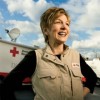 Linda Mathes
CEO, American Red Cross in the National Capital Region
Linda Mathes
CEO, American Red Cross in the National Capital Region
Linda Mathes, selected as a 2008 Washingtonian of the Year, is the Chief Executive Officer of the American Red Cross in the National Capital Region which includes the District of Columbia; counties of Arlington, Fairfax, Loudoun, Montgomery, Prince George’s and Prince William; and cities of Alexandria, Fairfax, Falls Church, Manassas and Manassas Park. Linda was recently invited to the White House to help recognize Red Cross Champions of Change.
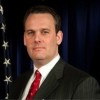 Jason McNamara
Jason McNamaraAs Vice President, Jason McNamara is a member of Obsidian’s executive management team, directing the disaster recovery program area as well as services for state and local clients. Mr. McNamara is a national leader in homeland security and emergency management, having been Chief of Staff for the Federal Emergency Management Agency (FEMA) for the past four years. In that role, Mr. McNamara worked with leadership at FEMA, the Department of Homeland Security, and the White House to transform FEMA into a highly effective response and recovery agency. As FEMA Administrator Craig Fugate’s Chief of Staff, Mr. McNamara oversaw the cutting of red-tape, the staffing of FEMA with outstanding managers who are widely recognized as the most experienced and talented in the agency’s history, as well as the reinvigoration of the nation’s response and recovery strategies for disasters. Mr. McNamara also helped change FEMA’s orientation towards an emphasis on survivor outcomes and incorporation of the Whole Community in delivering solutions. In addition, he played a key role in legislative accomplishments such as the Sandy Recovery Improvement Act, legislation providing tribal governments the ability to directly request disaster assistance from the President, and the five-year reauthorization of the national flood insurance program.
 Joseph Trindal
Joseph TrindalMr. Joseph Trindal is President at Direct Action Resilience LLC (DAR) with offices in Virginia. DAR and its training division, Direct Action Resilience Institute (DARI) is a recognized leader in emergency preparedness, response and resilience for both public and private sectors. Mr. Trindal also serves as President of the InfraGard National Capital Region Members Alliance, an FBI led public/private sector information sharing consortium of over 10,000 members. He also serves on the Homeland Security Intelligence Council. A member of the International Association of Emergency Managers (IAEM), Mr. Trindal serves on the Federal Facilities Emergency Managers Committee. He is also a long standing member of the National Tactical Officer’s Association (NTOA), International Association of Law Enforcement Firearms Instructors (IALEFI), and the International Association of the Chiefs of Police (IACP) among other organizations. Mr. Trindal continues public service as a special Deputy Sheriff for Culpeper County, Virginia.
 Dr. Michael Walter
Dr. Michael WalterAs program manager for the BioWatch system, Dr. Michael Walter supports the Department’s efforts to protect the nation from, and prepare federal, state and local governments to respond to biological attacks. Working with lab, field, public health, law enforcement, and emergency management personnel, Dr. Walter assists federal, state, and local governments from across the country in developing and testing response measures to biological attacks, tailored to specific local mission needs. Initiated in the wake of the anthrax attacks 10 years ago, BioWatch is a federally-managed, locally-operated nationwide biosurveillance system designed to detect the release of aerosolized pathogens. BioWatch supports special events including the Super Bowl, presidential inaugurations and national party conventions.
Thank you to the Co-Chairs of GTSC’s National Preparedness Month!
 Lilly Harris
Lilly Harris
CEO
Man-Machine Systems Assessment
 Marty Rathmann
Marty Rathmann
Director of Client Relations
GAP Solutions, Inc.
Thank you to our National Preparedness Month Sponsor!

If you are interested in sponsoring this program, please contact us!
About InfraGard

The InfraGard National Capital Region Members Alliance (INCRMA) consists of a growing membership of professionals who are creating a more resilient critical infrastructure in the Washington, DC metro area. These include defense industrial base, information technology, water supply systems, electrical energy, emergency services, law enforcement, health systems, transportation, banking, and telecommunications. Our membership is voluntary yet exclusive and is comprised of individuals from both the public and private sector. The main goal of INCRMA is to promote ongoing communication, education, and community outreach between the public and private sectors and the FBI. In doing so, information is shared, relationships are strengthened, and vital assets are protected. To learn more, visit InfraGard at www.infragard.org.
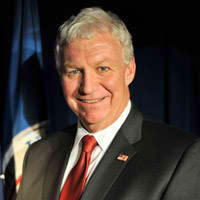 About Richard Serino
About Richard SerinoRichard Serino was appointed by President Obama and confirmed by the Senate as the Federal Emergency Management Agency’s Deputy Administrator in October 2009. In this role, he works directly with Administrator Craig Fugate to promote the “whole community” approach to emergency management, which seeks to build, sustain, and improve the Department’s capacity to prepare for, protect against, respond to, recover from, and mitigate all hazards. Since joining FEMA, Mr. Serino has traveled all over the country to communities affected by disasters to hear directly from survivors, and build relationships with whole community partners. During his tenure, he has seen flooding throughout the Midwest, fires in Colorado and Texas, tornadoes that devastated Joplin, Missouri, tsunami destruction in the American Samoa, and the Hurricane stricken areas in the south and along the east coast. Additionally, he spends time traveling to each of FEMA’s ten regional offices.
Mr. Serino strives to improve FEMA programs and emergency management by hearing directly from disaster survivors, communities, and FEMA employees. These improvements are focused on emphasizing financial accountability, improving the use of analytics to drive decisions, advancing the workforce, and fostering a culture of innovation. Under Mr. Serino’s leadership, FEMA has championed initiatives such as FEMA Corps, FEMA Stat, the FEMA Think Tank, a detailed budgetary process, and a Disaster Workforce Transformation.
Mr. Serino brings 35 years of state and local emergency management and emergency medical services experience to his position at FEMA. Prior to his appointment as Deputy Administrator, he served as Chief of Boston EMS and Assistant Director of the Boston Public Health Commission. In that role, he bolstered the city’s response plans for major emergencies, including chemical, biological, and radiological attacks. He also led citywide planning for H1N1 influenza. Mr. Serino has served as an Incident Commander for over 35 mass casualty incidents and for all of Boston’s major planned events, including the Boston Marathon, Boston’s Fourth of July celebration, First Night, and the 2004 Democratic National Convention, a National Special Security Event.
Since 1998, Serino has been a National Faculty member for the Domestic Preparedness Program. He was an original contributing member for the Defense Department’s Domestic Preparedness Training Program and Metropolitan Medical Response System. Serino has been involved, since its inception, with the Lessons Learned Information Sharing www.llis.gov network for emergency responders. As a consultant to the Pentagon and the Defense Department, Serino served on the 9/11 after-action team to assess medical consequence management policies and procedures. Serino attended Harvard University’s Kennedy School of Government Senior Executives in State and Local Government program in 2000, completed the Kennedy School’s National Preparedness Leadership Initiative in 2005, and graduated from the Executive Leadership Program, Center for Homeland Defense and Security at the Naval Postgraduate School.
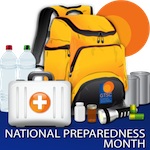 Following the attack at the Boston Marathon, so many people tried to reach their loved ones that wireless carriers couldn’t keep up with demand. When faced with calamity, we want to check on our friends and family and get information about what happened.
Following the attack at the Boston Marathon, so many people tried to reach their loved ones that wireless carriers couldn’t keep up with demand. When faced with calamity, we want to check on our friends and family and get information about what happened.
Don’t Make It Up As You Go Along
This need to receive and disseminate information following a catastrophe is important to businesses, too. You need to determine where your employees are and if everyone is safe. You need to make sure people know what they should do or where they should go. You need to reach out to your customers. In some cases, you need to talk to the press and answer their questions.
It is difficult, if not impossible, to come up with a coherent, comprehensive communications plan in the shadow of a crisis. Often, saying the wrong thing can haunt you for weeks or months after the event.
Plan Ahead, Communicate the Plan
Your building already has an occupant emergency procedure that covers evacuation during a fire or taking cover in the center of the building during a storm, but that plan doesn’t cover communication within your organization or to your clients.
Compose two types of alerts—internal and external. Internal alerts should be broadcast through email, overhead paging systems, voice messages, or text messages to employees. Internal alerts should include information about evacuation, relocation, assembly points and status updates, including telling employees when it is safe to return to the office. Let your employees know, as part of your disaster preparedness training, how you will communicate with them after a crisis.
External communication involves notifying employees’ families, discussing the situation with the press, social media status updates, and email to customers and clients. Each external message should be crafted to suit the intended audience. In the immediate aftermath, people will accept broad statements, but they will want more concrete information as soon as you can deliver it. Being prepared will make it easier to get the right message to the right people.
Communication is Mitigation
Once everyone is safe, you need to safeguard your business and your reputation. Planning what you will communicate, when you will communicate, and to whom you will communicate in the event of an emergency, may be the difference between a full recovery and a downward spiral. Customers, clients, the media, and your employees, will be reassured by clear, concise, professional communication if you’re business is faced with an emergency situation.
After a disaster or a disruption, you’ll have enough to handle. Don’t leave crisis communications to chance.

Lilly Harris
CEO
MSA
Lilly Harris is the President and CEO of Man-Machine Systems Assessment. MSA is an Economically Disadvantaged Woman-Owned Small Business with 23 years of government contracting experience. MSA is passionate about our Warfighters and the preparedness of our nation. MSA works diligently to evaluate defense systems, ensure continuity of operations and support mission critical programs that are aligned with our passion and mission.
Visit: www.msaincorp.com
Follow: @MSAincorp
 Turn on the news following a mass shooting and the witness describe the same scene: people barricading themselves in rooms, hiding under tables, scrambling for shelter as a shooter stalks through the building.
Turn on the news following a mass shooting and the witness describe the same scene: people barricading themselves in rooms, hiding under tables, scrambling for shelter as a shooter stalks through the building.
As unlikely as it seems, it is possible to prepare for this situation and make your workplace safer.
The Current Statistics
The FBI defines a mass shooting as an event where four or more people are killed. USA Today used that definition to analyze 146 mass shootings during the last seven years and found that over 900 people had been killed in mass shootings. The Brady Campaign to Prevent Gun Violence defines a mass shooting as three or more people killed or injured in a single incident. Following their standard, they estimate more than 20 mass shootings per year in the US.
The Need for Drills
Practice makes perfect. Most of the victims or witnesses involved in a mass shooting were taught how to calmly evacuate a building in case of a fire as children, but almost none of them know how to react if they are faced with gunfire. Conducting regular drills provides your organization with the muscle memory to respond effectively to an active shooter incident.
The Importance of Planning
In addition to drills and training, your business should plan for an active shooter as it would other disasters. We recommend the following best practices.
The Comfort of Preparedness
Active shooters are not something most people want to think about, but avoidance won’t keep you, your employees, or your business safe. Remember too that we learn to exit buildings safely during fire drills in school and at work, and we have some idea how to proceed in other buildings if a fire breaks out. If you take the time to train your employees, they’ll have that information no matter where they go. Some parameters will change, but knowing the basics of how to behave in an active shooter situation may save their lives even if they aren’t at the office.
It’s easy to avoid uncomfortable topics, and we all do it. But don’t let discomfort lead to a lack of preparation. If you need help with active shooter preparation, we’re here to guide you and your staff through the process.

Lilly Harris CEO, MSA
Lilly Harris is the President and CEO of Man-Machine Systems Assessment. MSA is an Economically Disadvantaged Woman-Owned Small Business with 23 years of government contracting experience. MSA is passionate about our Warfighters and the preparedness of our nation. MSA works diligently to evaluate defense systems, ensure continuity of operations and support mission critical programs that are aligned with our passion and mission.
Visit: www.msaincorp.com
Follow: @MSAincorp
 September 2013 is National Preparedness Month. Over the next month, the GTSC blog will take a look at some emergency tips and resources to keep your business prepared to be ‘afloat’ for the inevitable.
September 2013 is National Preparedness Month. Over the next month, the GTSC blog will take a look at some emergency tips and resources to keep your business prepared to be ‘afloat’ for the inevitable.
In May, states across the US experienced major flooding and record-breaking tornadoes plowed through cities and towns. In June, wildfires devastated Arizona. In April, newspapers and news channels were consumed with the Boston bombing. In every case, local businesses were impacted – and in some cases destroyed – in the aftermath of the disaster.
With disasters—manmade and natural—on the rise worldwide, and local businesses increasingly impacted by what happens around the globe as much as what happens down the street, business continuity planning is more important than ever.
Some Businesses Won’t Survive
Local businesses are the economic backbone of their communities. When they have no plan to guide recovery efforts after a disaster, the effects of lost wages and services ripple through the entire community, and the impacts keep piling up after the crisis.
Following a major disaster, local businesses that aren’t prepared continue to suffer. According to a study by the Institute for Business & Home Safety, 25% of local businesses never reopen. For those that do, reopening quickly is essential to survival. More than 80% of businesses that take more than 10 days to resume operations will close within one month.
Some Businesses Will Thrive
Nobody would hope for a disaster to boost the local economy, but experience shows that they often do. The effect is so significant that local economies are often overrun by outside businesses seeking to get their hands on valuable contracts. Often, these companies bring in their own outside workers that have no ties to the community. If your business can weather the storm, it will help your bottom line and benefit local workers and families.
Preparation is Key
Business continuity planning can help your business weather the storm—or anything else that comes along. The basic steps are relatively easy, but many businesses never get around to thinking about them until it’s too late.
Benefits Beyond Survival
As you develop a business continuity plan, you’ll take a closer look at your organization and its priorities. Often, stakeholders uncover ways to streamline or improve operations as a byproduct of disaster planning.
Disasters may be devastating, but planning is good for business. Get started today!

Lilly Harris
CEO
Man-Machine Systems Assessment
Lilly Harris is the President and CEO of Man-Machine Systems Assessment. MSA is an Economically Disadvantaged Woman-Owned Small Business with 23 years of government contracting experience. MSA is passionate about our Warfighters and the preparedness of our nation. MSA works diligently to evaluate defense systems, ensure continuity of operations and support mission critical programs that are aligned with our passion and mission.
Visit: www.msaincorp.com
Follow: @MSAincorp